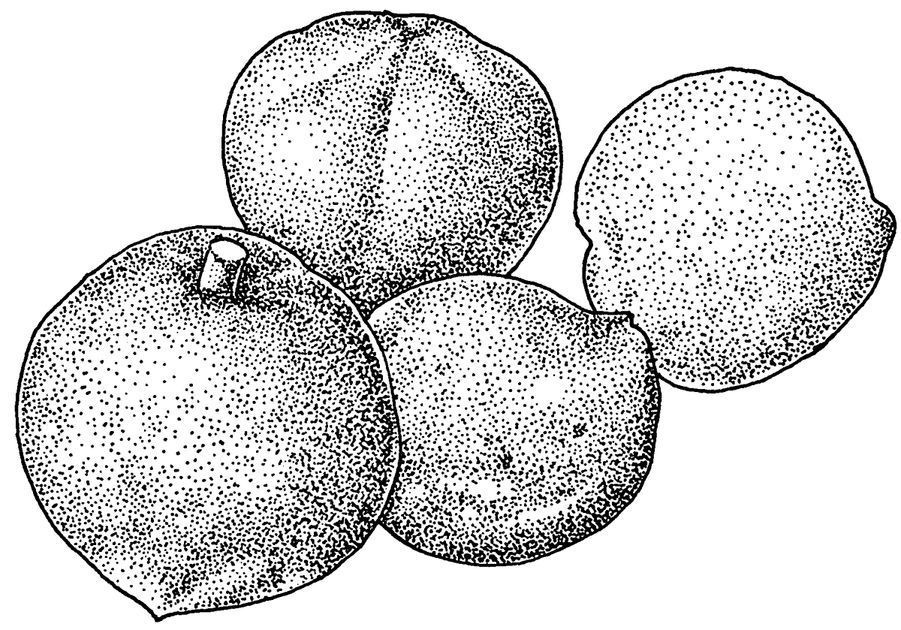Label
All
0
Clear all filters
Sapote, White
Casimiroa edulis
Appears in
Published 1986
Also
With only a few acres planted in California and Florida, it may be a bit premature to discuss this silky, creamy, utterly confusing (in name only) fruit. But its market potential looks so promising that making a place for it on greengrocers’ shelves seems more a matter of time than of question.

The white sapote’s (sah-PO-tay) pale cream flesh is unusually soft, juicy, and light-textured, truly the consistency of fine flan—devoid of fiber or granules. It has a very sweet, mild flavor (sometimes downright bland) that may hint of peaches, lemons, mango, coconut, caramel, or vanilla, depending upon the variety. The size of an orange or grapefruit, its very thin skin may be bright green to canary yellow, and everything in between. The white sapote has 2–5 seeds that may be flat and chiplike or the size and shape of orange seeds (the fruit, like Citrus, is a member of the Rutaceae or Rue family). They are embedded at random (or so it appears to me) in the delicate custardy flesh of this apparently coreless fruit.
Become a Premium Member to access this page
Unlimited, ad-free access to hundreds of the world’s best cookbooks
Over 160,000 recipes with thousands more added every month
Recommended by leading chefs and food writers
Powerful search filters to match your tastes
Create collections and add reviews or private notes to any recipe
Swipe to browse each cookbook from cover-to-cover
Manage your subscription via the My Membership page
Best value
Part of
Advertisement
Related Recipes
-
-
-
-
Related Reference
-
-
-
-
Advertisement
The licensor does not allow printing of this title



